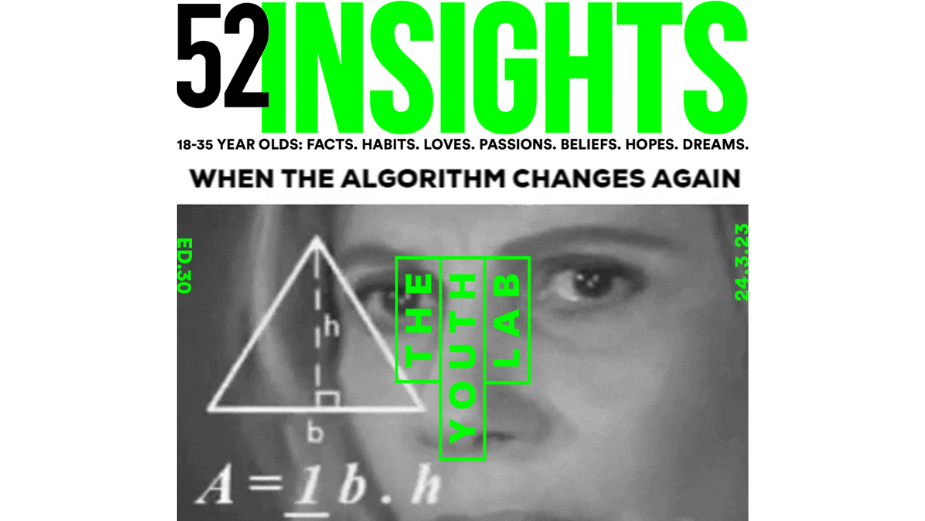
What You Need to Know About ‘Algospeak’

The Youth Lab at THINKHOUSE, one of the world’s leading independent agencies, works to demystify youth culture and future-proof some of the world's largest organisations through insights, strategy and innovation consultancy. This week, The Youth Lab are explaining algospeak.
Algospeak - codewords to avoid the algorithm
What follows is an introduction to ‘Algospeak’ and is written to simply inform you of the transition of internet language in real time, where creators are using new phrases and codewords to avoid detection from social media AI moderation.
BEFORE ALGOSPEAK
As long as we’ve had language, we’ve had ways to disguise its meaning. Ways of concealing language are myriad. Pig Latin was spoken as far back as the 1600s to mystify eavesdroppers, and even gets a mention in Shakespeare’s Love’s Labour Lost. The Queer community in the 18th and 19th centuries spoke Polari to communicate undetected. The travelling communities of Ireland, UK & Europe have an array of “cants”, which aren't fully-fledged languages but are created by communities, many of them marginalised, to maintain secrecy to survive. The well-documented Cockney Rhyming slang has similar origins and has stayed in playful use up to the modern day.
But from a youth perspective, teens and young adults have always had reasons to hide their conversations from parents and teachers - for example, emoji are the most communicated language in the world today (read more on previous editions of youth speak analysis here and here).
WHY ALGOSPEAK?
“We’ve come a long way since “p0rn” and the eggplant emoji..While machine learning can spot overt violative material, like hate speech, it can be far harder for AI to read between the lines on euphemisms or phrases that to some seem innocuous, but in another context, have a more sinister meaning. Almost a third of Americans on social media say they’ve used emojis or alternative phrases to circumvent banned terms.” Alexandra S. Levine, Forbes
The rise of Algospeak can be seen as the latest progression of the natural inclination of young people to conceal the meaning of their communication to figures of authority. Algospeak shows the creativity of young people and internet users to adapt with bacteria-like speed and innovation to evade comprehension by the technological entities that could demonetise them.
Hacking the algorithm to communicate and play with language is indeed a powerful tool. Aside from avoiding detection, it can create a sense of security with communicating online and avoid search. Black, trans and other marginalised social media users often use algospeak when trying to talk about the struggles they face, like using YT to denote “white people” in conversation with an unspoken meaning. However, some are even afraid to use any word and will avoid writing the algo version. Instead, they will use a visual, bringing their palm to face the camera, as a non-verbal queue instead, hacking the algorithm even more.
ALGOSPEAK 101: EXAMPLES
‘Algospeak’ takes the form of words often by misspelling or replacing letters - but crafty algo-speakers are also repurposing pre-existing words to convey something they know will pique the demonetising interest of the Algo. Some examples of algospeak words of the moment include:
1. Panini: This one came about after the pandemic after accounts mentioning anything to do with it were banned to stop the spread of misinformation. Also used: Panda Express, and (hilariously enough) The Backstreet Boys Reunion Tour.
2. 🌻: This was appropriated to refer to Ukraine after the outbreak of the war.
3. Blink in Lio: Cute little letter swap when users are directing reader to follow from elsewhere.
4. Ouid: This is a phonetic respelling of ‘Weed’.
5. Seggs: Say it out loud and it’s pretty obvious!
6. Skripper: Term used by the stripping community.
7. Leg Booty: This began to be used to signify being a member of the LGBTQAI+ community, sparked in 2017 by the YouTube “Adpocalypse”.
8. Cozzie Livs: The cost of living crisis
BRAND TAKEOUTS
Don’t Take Youth Culture at Face Value - There’s always an element of decoding to be done when it comes to youth-speak online today. Embrace this as a challenge - getting closer to the real meaning behind cultural conversation will help you understand nuanced attitudes and behaviours.
As a brand, it can be tempting to try and jump on every neologism, trend and meme and show that you’re aware of its existence, but beware of overkill when accessing youth language, for fear of evoking a certain Steve Buscemi meme Keep your eyes peeled for instances, idioms or phrases that fit your brand, and will resonate with your audience. Have fun with it, but make it a hat tip to the cultural conversation, rather than pretending to be immersed in it.















